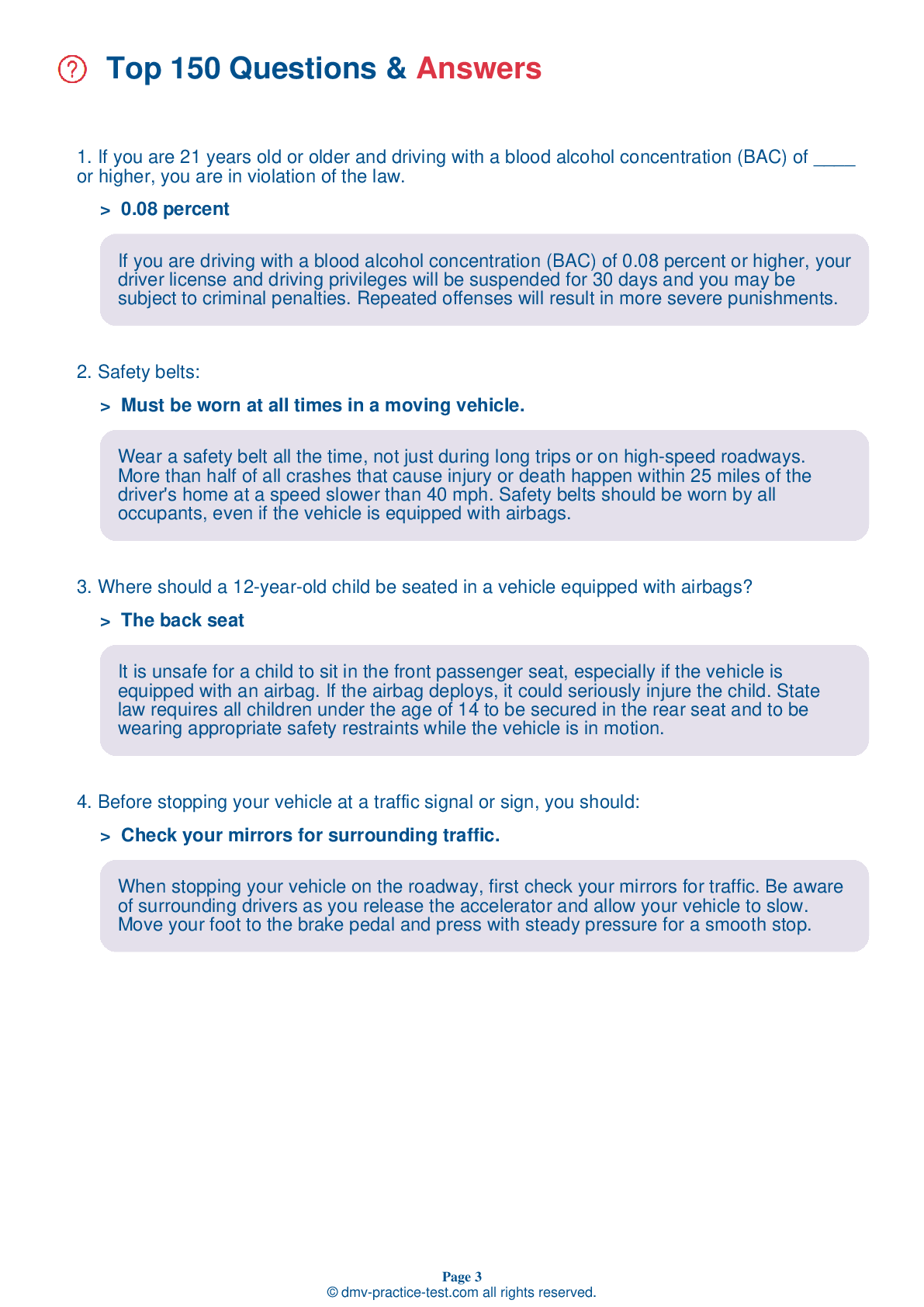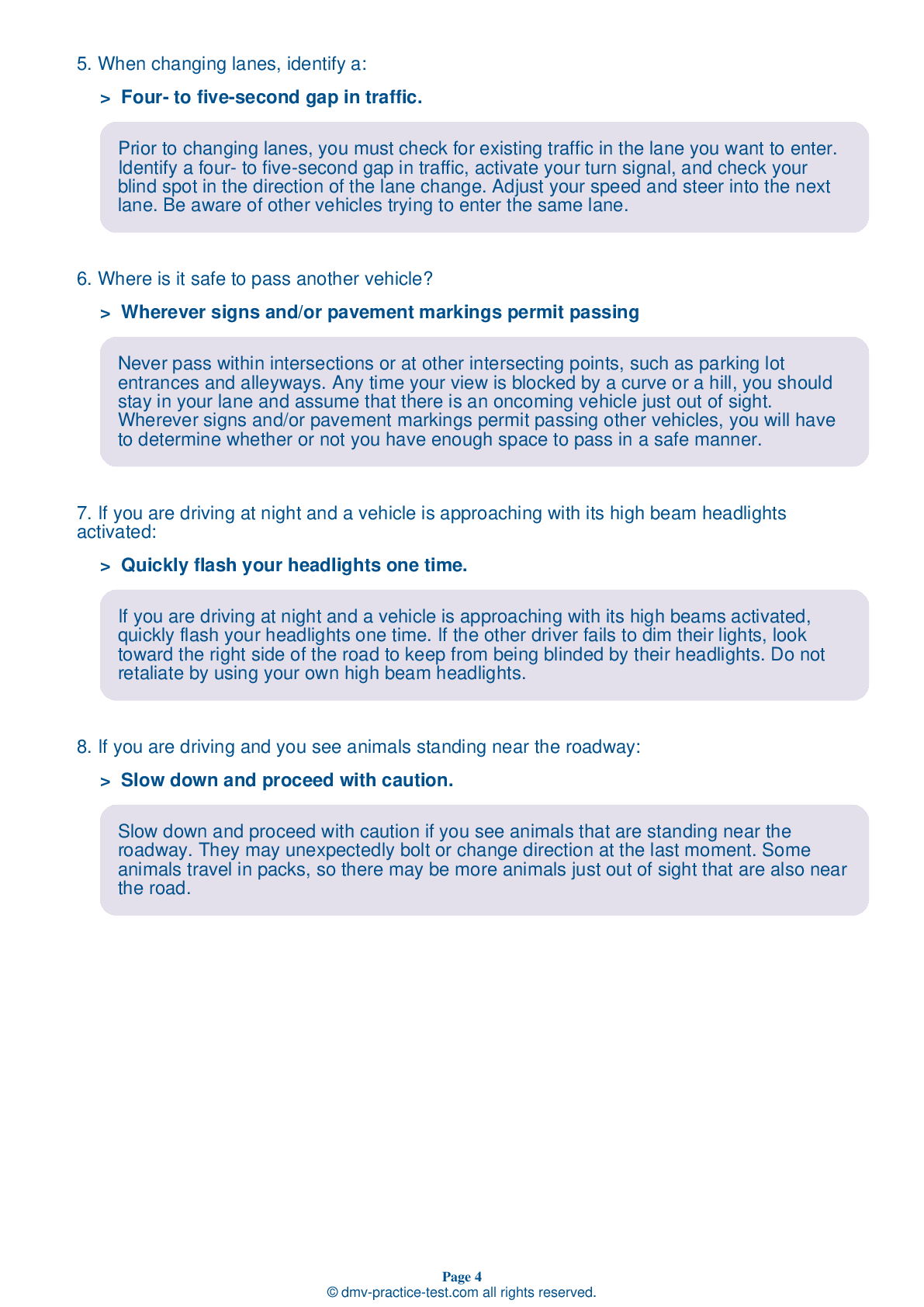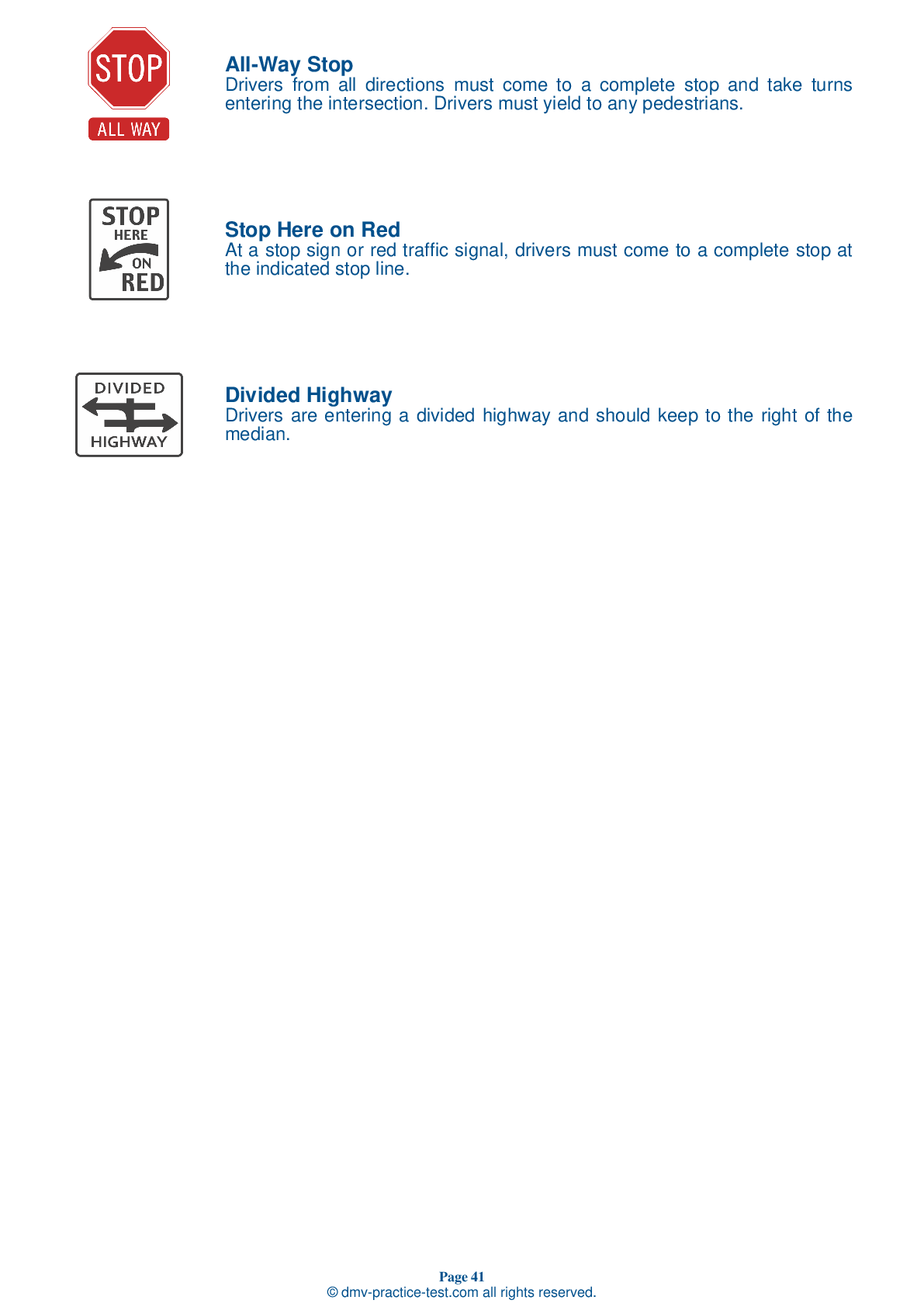FREE Kansas DMV Practice Test #19 Page 2 of 3
In Kansas, the DMV practise tests have been revised for January 2025. It includes questions based on the Kansas Driver Handbook's most essential traffic signals and regulations for 2025. Use actual questions that are very similar (often identical!) to the DMV driving permit test and driver's licence exam to study for the DMV driving permit test and driver's licence exam.
On the practise exam, each question gets a tip and explanation to help you remember the concepts. The written component of the official Kansas DMV test will include questions about traffic rules, traffic signs, and driving statutes, as well as information from the Driver Handbook.
To obtain a passing grade, you must correctly answer 20 of the 25 questions. Take our DMV practise exam to help you prepare for your Kansas instruction permit or driver's licence.
The DMV exam is available in several languages.
Using any kind of testing assistance will result in an automatic fail, and the DMV may take additional action against your driver's licence, so stay away from it.
9 . If your car becomes disabled while on the highway, you should:
If your vehicle becomes disabled, you must (if possible) park with all four wheels off of the main-traveled portion of the road.
10 . When preparing to make a left turn from a two-way street, you should drive:
When you are turning left from a two-way street, begin in the lane closest to the centerline and start your turn just before the front of your car reaches the center of the intersection. Do not cut the corner. Steering hand-over-hand, turn into the first available legal lane.
11 . If a truck or bus is making a right turn where you also need to make a right turn, you should:
If you try to insert your vehicle between a turning truck or bus and a curb, you may suffer a serious crash. To avoid a collision, do not turn until the truck or bus has completed its turn.
12 . A sign with this shape means:
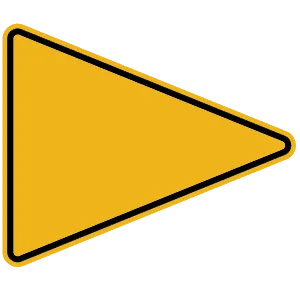
A pennant-shaped sign marks the beginning of a no passing zone.
13 . If you are facing a green traffic light but the intersection ahead is blocked by traffic, you should:
Even if you are facing a green traffic light, do not start across the intersection if there are other vehicles blocking your way. If you are caught in the intersection when the light changes to red, your vehicle will block cross traffic. You can get a ticket for blocking an intersection.
14 . While in a motor vehicle on a highway, it is:
It is illegal to operate a motor vehicle while under the influence of alcohol. Neither drivers nor passengers may possess an open container of alcohol in a motor vehicle while it is in operation.
15 . What should you do when you see this sign?
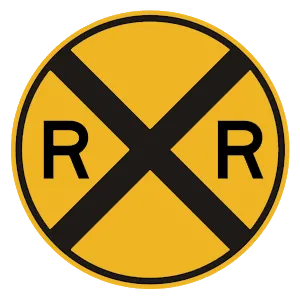
A round sign means you are approaching a railroad crossing. This sign is posted a few hundred feet in front of the tracks and tells drivers to slow down, look, listen, and prepare to stop.
16 . If you encounter an aggressive driver, you should:
Drivers must respect and cooperate with all other road users and conform to specific rules in order to maintain order and to avoid crashes. When encountering an aggressive driver, it is safest to just get out of their way. Always avoid competing with other drivers.
See the exact questions that will be on the 2025 Kansas DMV exam.
99.2% of people who use the cheat sheet pass the FIRST TIME
LT gives us an insight on how the cheat sheet provided her with all the study questions she needed before taking her test.
Joe initially studied with the handbook and failed his test, he eventually found us online, studied and pass his test the first time around.

